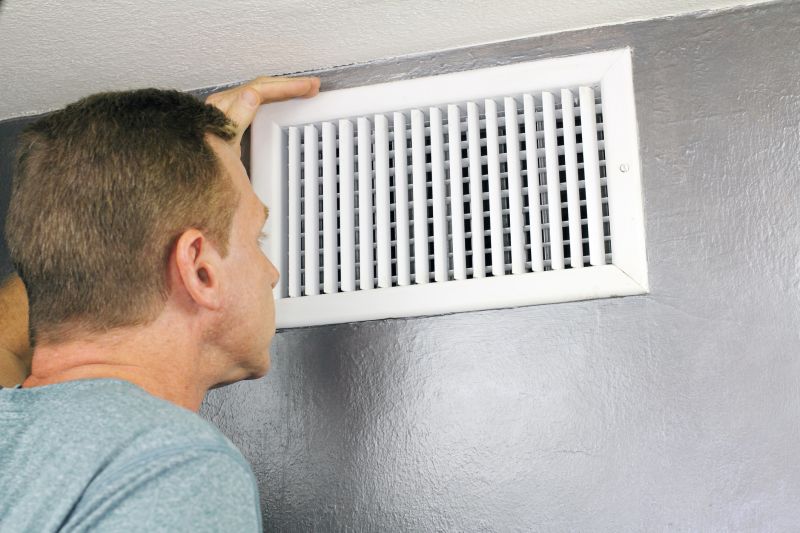Leading Duct Installation Products For Professional-Grade HVAC Systems
Select from industry-leading duct products designed for durability, precise fit, and optimal airflow in complex installations.
 Installing ductwork effectively is essential for ensuring proper airflow and efficient operation of heating, ventilation, and air conditioning systems. The process involves selecting the right components to facilitate smooth air movement, minimize leaks, and accommodate space constraints. Properly chosen products can help maintain consistent temperatures and improve indoor air quality. Whether upgrading existing duct systems or installing new ones, understanding the variety of available products can aid in making informed decisions.
Installing ductwork effectively is essential for ensuring proper airflow and efficient operation of heating, ventilation, and air conditioning systems. The process involves selecting the right components to facilitate smooth air movement, minimize leaks, and accommodate space constraints. Properly chosen products can help maintain consistent temperatures and improve indoor air quality. Whether upgrading existing duct systems or installing new ones, understanding the variety of available products can aid in making informed decisions.
Top Overall Option
Universal Duct Fitting Kit
A versatile duct fitting kit designed to accommodate a wide range of duct sizes and configurations, providing reliable connections and sealing options for both residential and commercial installations.
Types of Products For Duct Installations
Flexible Ducts
Flexible ducts are made from a wire coil covered with a plastic or foil lining, allowing for easy routing around obstacles and in tight spaces.
Rigid Metal Ducts
Rigid metal ducts are typically made of galvanized steel or aluminum, offering durability and structural stability for long-term installations.
Duct Connectors and Couplings
Connectors and couplings facilitate joining different duct sections securely and help maintain airtight seals.
Insulation Wraps and Jackets
Insulation products help regulate temperature and prevent condensation within duct systems.
Sealing and Mastic Products
Sealants and mastics are used to seal joints and connections, reducing air leaks and improving efficiency.
Vibration Isolators
Vibration isolators help minimize noise and vibration transmitted through ductwork.
Duct Tape
Specialized HVAC duct tape is used for temporary or permanent sealing of duct joints and seams.
Diffusers and Grilles
Diffusers and grilles distribute conditioned air into rooms and allow for adjustable airflow.
Access Doors and Panels
Access points facilitate maintenance and inspection of duct systems.
Duct Mounting Brackets
Brackets and hangers secure ductwork to ceilings or walls, ensuring stability.
Transition Pieces
Transition fittings connect ducts of different sizes or shapes to ensure smooth airflow.
Aerodynamic Bends and Elbows
Elbows and bends help navigate around obstacles and change airflow direction efficiently.
Popular Choices
Popular for quick installations and in spaces with complex layouts, offering flexibility and ease of use.
Widely used for their durability and structural integrity in various HVAC applications.
Effective for temperature control and condensation prevention in duct systems.
Commonly used for sealing joints and temporary fixes, designed specifically for ductwork.
Allow for customizable airflow distribution and are frequently chosen for their versatility.
Valued for lightweight strength and corrosion resistance, suitable for many installations.
Popular for sealing duct joints due to their flexibility and strong adhesion.
Help reduce noise transmission and vibration in duct systems.
Commonly used for air distribution in various room types, offering adjustable airflow.
Essential for securely mounting ductwork in ceilings and walls.
Facilitate connecting different duct sizes or types with ease.
Help navigate duct runs around corners and obstacles efficiently.
Provide convenient access points for inspection and maintenance.
Duct installation products come in many forms, including flexible ducts, rigid metal ducts, connectors, insulation materials, and sealing components. Each type serves specific purposes and offers different advantages in terms of ease of installation, durability, and performance. For example, flexible ducts are often used for tight spaces or custom configurations, while rigid ducts are preferred for long runs and structural stability.
Ensuring compatibility between components is critical for creating an effective duct system. Proper fittings, connectors, and sealing products help prevent air leaks that can reduce system efficiency. Insulation materials are also vital for maintaining temperature control and preventing condensation. When selecting duct installation products, factors such as size, material, and ease of handling should be considered to match the specific requirements of the project.
Investing in quality duct installation products can contribute to a quieter, more efficient HVAC system and potentially reduce energy costs over time. It is advisable to review product specifications carefully and choose items that meet industry standards for safety and performance. Consulting with HVAC professionals or experienced installers can provide additional insights into selecting the most suitable components for your ductwork needs.
Key Buying Considerations
- Duct size compatibility with existing HVAC system components
- Material durability and resistance to corrosion or damage
- Ease of installation and handling, especially in tight spaces
- Compatibility with insulation and sealing products
- Airflow requirements and system pressure ratings
- Noise reduction features such as vibration dampening
- Flexibility versus rigidity based on installation needs
- Availability of fittings, connectors, and accessories
- Compliance with industry standards and safety codes
- Cost-effectiveness over the lifespan of the system
- Ease of maintenance and accessibility for inspection
- Compatibility with existing ductwork layouts
- Sealant and adhesive compatibility for airtight connections
- Weight and support requirements for overhead installations
- Aesthetic considerations for visible ductwork
